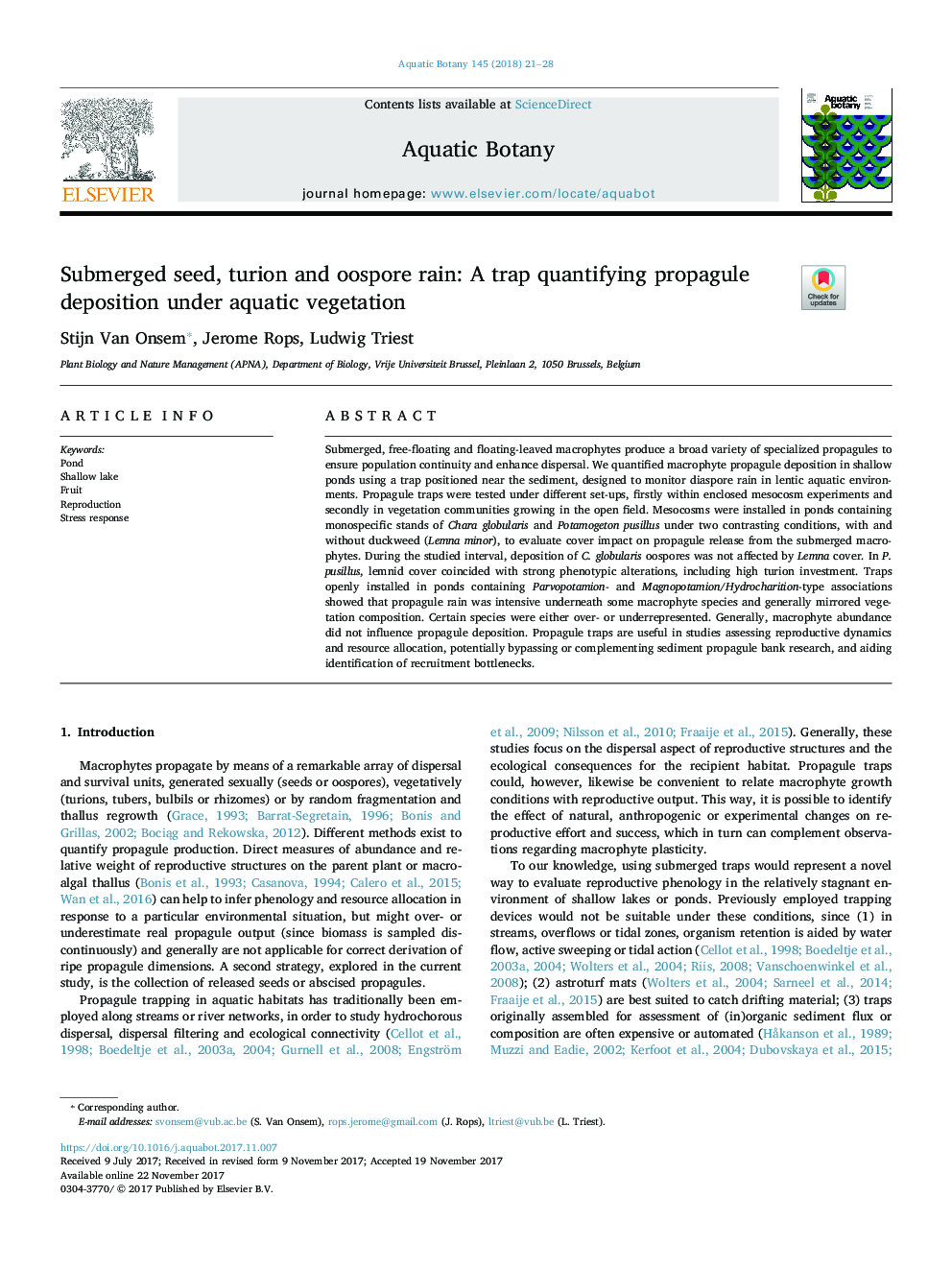| Article ID | Journal | Published Year | Pages | File Type |
|---|---|---|---|---|
| 8883595 | Aquatic Botany | 2018 | 8 Pages |
Abstract
Submerged, free-floating and floating-leaved macrophytes produce a broad variety of specialized propagules to ensure population continuity and enhance dispersal. We quantified macrophyte propagule deposition in shallow ponds using a trap positioned near the sediment, designed to monitor diaspore rain in lentic aquatic environments. Propagule traps were tested under different set-ups, firstly within enclosed mesocosm experiments and secondly in vegetation communities growing in the open field. Mesocosms were installed in ponds containing monospecific stands of Chara globularis and Potamogeton pusillus under two contrasting conditions, with and without duckweed (Lemna minor), to evaluate cover impact on propagule release from the submerged macrophytes. During the studied interval, deposition of C. globularis oospores was not affected by Lemna cover. In P. pusillus, lemnid cover coincided with strong phenotypic alterations, including high turion investment. Traps openly installed in ponds containing Parvopotamion- and Magnopotamion/Hydrocharition-type associations showed that propagule rain was intensive underneath some macrophyte species and generally mirrored vegetation composition. Certain species were either over- or underrepresented. Generally, macrophyte abundance did not influence propagule deposition. Propagule traps are useful in studies assessing reproductive dynamics and resource allocation, potentially bypassing or complementing sediment propagule bank research, and aiding identification of recruitment bottlenecks.
Related Topics
Life Sciences
Agricultural and Biological Sciences
Aquatic Science
Authors
Stijn Van Onsem, Jerome Rops, Ludwig Triest,
